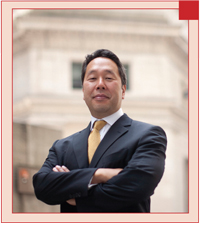Pooling Chemistry
How Sinochem engineered global treasury cohesion.
Published: February 23, 2015


 Imagine if you could lead your treasury department to be as visionary and as iconic as, say, Apple is for many consumers and investors. There is a reason why Apple commands such a loyal fan base, and it’s not because of what they do (computers, tablets, phones, music) or how they do it (elegant design), but why they do it. In his book, Start with Why, leadership expert Simon Sinek talks about how some leaders of great companies are able to become the best at what they do – not just by how they do things better than the competition, but because they understand why they do it. Looking at treasury through this lens, perhaps we could apply Sinek’s thinking and change how treasury is viewed – not just as a cost centre, but a true, strategic partner with an inspirational vision that is alluring to everyone.
Imagine if you could lead your treasury department to be as visionary and as iconic as, say, Apple is for many consumers and investors. There is a reason why Apple commands such a loyal fan base, and it’s not because of what they do (computers, tablets, phones, music) or how they do it (elegant design), but why they do it. In his book, Start with Why, leadership expert Simon Sinek talks about how some leaders of great companies are able to become the best at what they do – not just by how they do things better than the competition, but because they understand why they do it. Looking at treasury through this lens, perhaps we could apply Sinek’s thinking and change how treasury is viewed – not just as a cost centre, but a true, strategic partner with an inspirational vision that is alluring to everyone.
Sinek uses Apple and other examples to help readers see the significance in understanding why a company exists. Apple’s purpose, or its why, is to challenge the status quo. Remember the first Apple computer TV ad with a runner smashing the Orwellian Big Brother screen? The ad didn’t even feature the actual computer. Apple fans will wait in line overnight to be the first with a new iPhone or iPad. This response is like no other for a phone or tablet company on the day of their new product release because Apple fans associate themselves with the company’s why in challenging the status quo.
As a leader of your treasury organisation, getting to the essence of your why may not be easy, and you will need to be able to articulate it in a few words that capture your sense of purpose. Start with just why you chose the treasury profession, and include other important life decisions. A person or company’s why is not to be confused with a result, like making more money or being number one in your industry. Nor should it be simply what you do, like providing cash, liquidity, payment, debt, investment and risk management etc., or even how you perform these functions. This kind of thinking will only put you right back into the day-to-day, leading to incremental improvement, not visionary change. Apple would never have dreamed of entering the crowded phone market or upending the music industry if it was focused on what it did with computers, rather than why it entered the business. You could apply the same thinking to your leadership in treasury.
You can also extend your treasury why to create a unique, visionary treasury experience and more effectively share your vision across the organisation and with the industry.
Here are some examples of possible treasury why’s: “We love to service people”, “We exist to help the business grow”, “We want to be the first in everything we do”. These statements are fundamental. They are not meant to focus on cash management or other functions – they are meant to be inspirational. Each can lead to very different behaviour, actions and results that will impact what you do and how you do it. Focusing on your why can lead to better decision-making, departmental alignment and visibility within your organisation. For example, if your why is “We love to service people,” then you will align your team around this core value and hire those who like to deal with people rather than hide behind numbers.
You can also extend your treasury why to create a unique, visionary treasury experience and more effectively share your vision across the organisation and with the industry. One of the challenges I hear about most often is getting business units to work together with treasury. Much time is spent on trying to educate others on what you do in treasury, but perhaps getting them to believe in why you do it will lead to a common understanding, and then a desire to work together.
So as we start the New Year, I leave with you this simple thought: What is your treasury why and how are you going to use it?